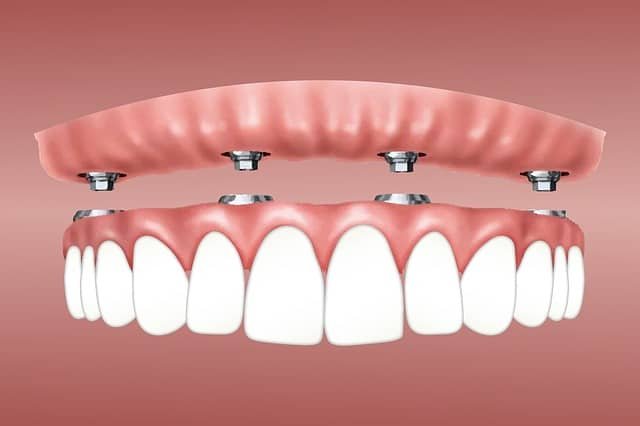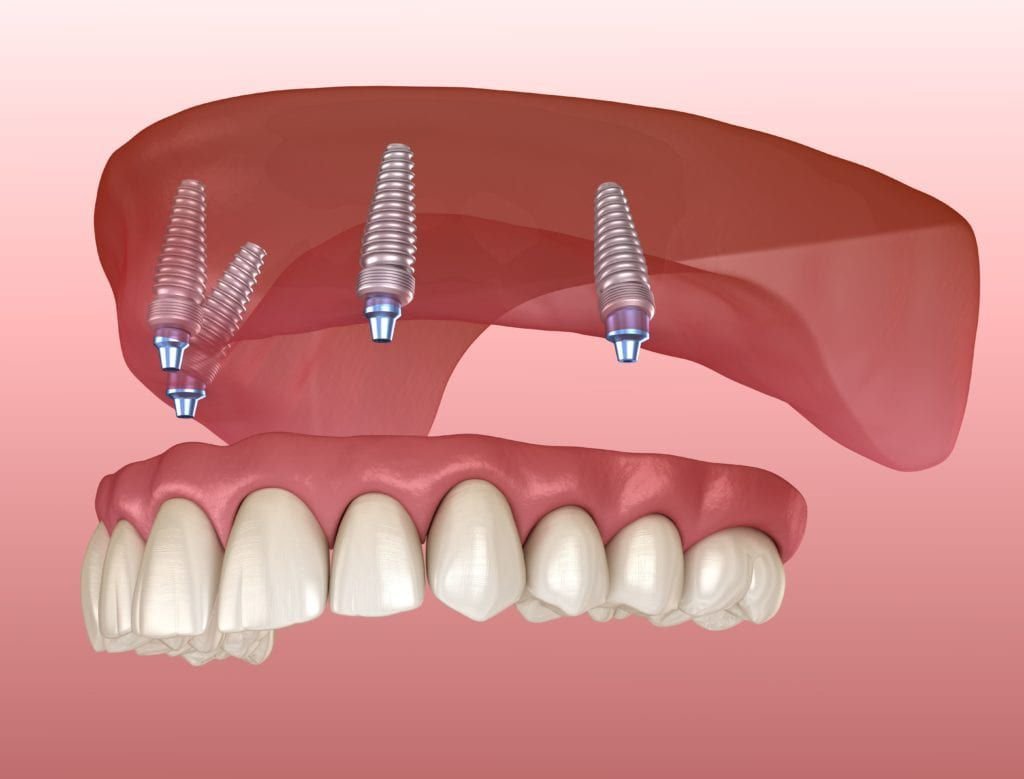Missing teeth can occur at any time during one’s life. Dental loss can occur as a result of trauma, an accident, advanced gum disease, tooth decay, or poor oral hygiene. If left untreated, missing teeth can result in a variety of problems, including:
Dental implants can help with all of the aforementioned issues. They are without a doubt the best and most common method of replacing missing teeth. Dental implants are appropriate for anyone who is lacking teeth, regardless of age or gender. Click here to find out if you qualify for dental implants.
Implants have a 98 percent success record, giving dental patients peace of mind about the health of their teeth and gums.
Dental implants are just a titanium screw that is bonded to the jaw bone.
Placing a dental implant has various stages. They are listed as below:
The implant implantation operation can be made easy and pain-free thanks to current dentistry procedures. Patients who are nervous about having a dental implant placed can request sedation from their dentist.
The treatment begins with the preparation of the jawbone, followed by a cut to expose the bone for drilling holes by the surgeon. The holes are kept deep enough to allow the implant to be correctly installed and inserted deep into the bone, similar to the root.
In circumstances where the bone is weak or unable to support implant surgery, the doctor may recommend bone grafting. After that, the surgeon waits for the jawbone to heal before inserting the metal post.
The entire procedure, from beginning to end, could take several months, with the majority of that time spent recovering and waiting for new bone to form in the jaw.
After that, the patient is given a temporary crown, which is used to close the gap and provide the desired cosmetic result. This crown can be removed for implant surgery, however it must be done when the bone has fully healed.
The jawbone will grow and join with the surface of the dental implant throughout this procedure. This procedure, also known as osseointegration, aids in providing a strong foundation for the new artificial tooth, just like roots provide for natural teeth.
Depending on the condition and shape of the bones, this process can take anywhere from 3 to 6 months. When patients have good bone structure, however, the operation can be performed in one day.
The second surgery can then be scheduled, but only after the implants have merged with the bone. An x-ray will be taken by your dentists to determine whether the implant is suitable for the second procedure.
The second procedure will be less complicated than the first, as it will only require a fresh incision to expose the implant heads.
It’s possible that you’ll need another surgery to install the abutment (the portion that holds the crown in place), but only after you’ve healed completely. This treatment is often performed under anaesthesia in an outpatient environment.
The dentist will reopen the wound to attach the abutment to the dental implant during the process. For 4 to 6 weeks, a temporary crown will be used to allow the gums around the abutment to recover. This type of crown is softer, which can help to cushion the implant and stress the soft tissues, which can aid in the healing process.
You may need to consume only soft foods after each stage of surgery as a precaution to allow the surgical site to recover correctly.
The dentist will focus on making the permanent crown seem exactly like your natural teeth in the next stage. The surface texture, colour, and anatomy will all be adjusted to mix in with the surrounding dentition.
If you are unhappy with the crown for any reason, speak with your dentist about having it returned to the dental technician for adjustments.
To build the crown, impressions of your mouth and remaining teeth are obtained. This allows a realistic-looking artificial tooth to be created. The crown, on the other hand, will not be implanted until the jawbone is sufficiently strong to support the new tooth.
Making a permanent crown, which will be cemented or fastened to the Implant, takes less than 2 to 3 weeks.
Your doctor will go over post-implant care instructions with you after the permanent crown is placed.
Some people are concerned about the cost of dental implants; nonetheless, implants are not prohibitively expensive. Each surgery has several components, which contributes to the idea that implants are costly. It is crucial to note that if a missing tooth is not replaced with an implant, the neighbouring teeth will shift and jawbone loss will occur, both of which will be significantly more expensive to treat than a single dental implant.
To ensure that your implants last a lifetime, visit the dentist clinic on a regular basis and practise good oral hygiene.


